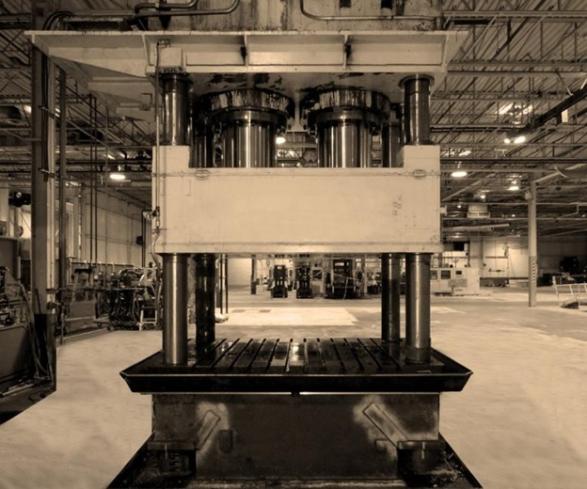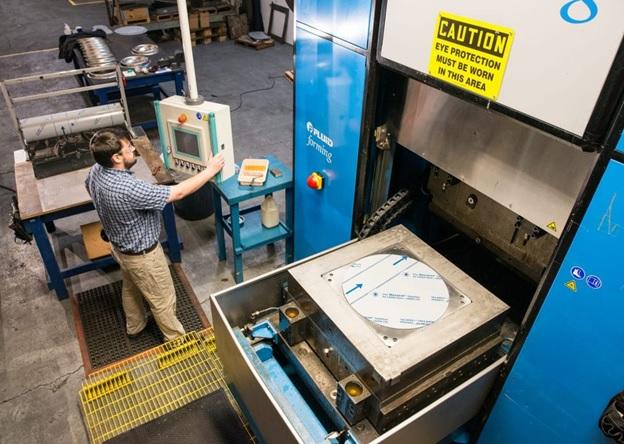

hydroforming
Hydroforming is a die forming procedure. Generally, it involves pressing hydraulic fluid under high pressure into the material (at room temperature) into a die.
It is effective in converting ductile metals and materials into strong structures. During the procedure, fluid pressure is used to form sheet and tube-shaped material components. Bladder hydroforming is a type of the former, while tubular is the latter.
This article sheds light on various aspects of bladder and tubular hydroforming. You can also make sure to visit any Bladder and Tubular Hydroforming Company for more insights and also to get your questions answered.
Tubular
Tube hydroforming involves a tube, dies and pressure. The tube is placed between two dies. The dies should be of the desired size, shape and proportions. After placement, the two tube ends are then sealed using axial punches.
The dies are closed. Lastly pressure is applied inside the tubes from one of the ends. The pressure used is mostly from a hydraulic fluid at room temperature. Upon pressure application, the tube transforms to take up the shape of the surrounding dies.
After shaping, the dies are opened, pressure is released, and hydraulic fluid released. The end result is a lightweight tube with the shape of the dies used.
Factors to consider.
While the process gives good results, here are some factors to consider before embarking on it. For example, consider the restrictions on elongation.
Different metals have different potentials for elongation. For example, aluminum is more malleable but less resilient than steel. Some steel alloys also have better elongating properties than aluminum. Therefore, it is better if you used the steel, rather than aluminum, if your tube requires a lot of elongation.
Secondly, you need to consider the alloy temper. Metallic materials come in a number of alloys. It is important to look at the different properties of individual alloys. Also, some alloys work better and are recommended for the process than others.
For example, with aluminum metal, T grade aluminum is recommended for structural tubes while W grade is great for decorative.
Corner restrictions are another crucial factor to consider. Tubular hydroforming works by application of equal pressure across a tube surrounded by dies. You would require a lot of pressure to achieve fine corners on the mold. However, if the fine corners are a must have, you could bigger dies as a counter.
Lastly, consider the costs. Like with everything else, cost is a key consideration in the process. Some of the factors that would affect the overall costs include the amount of material required, the size, and type of metal or alloy.
Bladder
Bladder hydroforming is a process in sheet hydroforming that is commonly known as flexforming. In the procedure, liquid is held in a bladder.
This means that no liquid gets in contact with the sheet. The fluid is at room temperature, then released at very high pressure thus changing the shape of the sheet.
The factors to consider in the process are similar to those of tubular hydroforming. These include the cost, material restrictions and properties of the metal or alloy.
How to improve the overall industrial efficiency of the process
Hydroforming requires technical knowhow to undertake. Therefore, it is important to have all the required knowledge about. In addition to research and knowledge, some of the other ways to improve the outcomes of bladder and tubular forming include:
- Use of top-quality equipment and machinery.
- Use of good metals and alloys.
- Adequately lubricating the machines.
- Appropriate pressure and fluid regulation.
Hydroforming vs. traditional stamping
Metal stamping is a commonly used method of improving the material. However, a close look will have you realize that hydroforming has gained popularity over time. Why is it being commonly used? The answer to this is simple. It bears more advantages. Some of the benefits of using it rather than sheet stamping include:
- It is great for complex shapes. Stamping is great. However, it is not ideal for creating more complicated shapes and designs. With stamping, you would have to create many different parts, and weld them together. Doing this takes up both time and energy. Hydroforming on the other end, allows you to create long and complex shapes and structure without having to weld them later on.
- Parts are lighter. The process allows for direct duplication of components without having to create many separate parts. This means fewer brackets on the parts and essentially less weight.
- Higher stiffness vs. weight ratio than stamping. The method allows for making stiff parts without them being necessarily heavy.
- The cost per unit for production is lower. Less parts hence less material is used compared with traditional stamping. Thus, the overall costs are less.
- Fewer steps are taken in the production resulting in fast creation of the end product.
That said, the procedure also has a few disadvantages in general. Some of them include a slow cycle time and extremely high cost of equipment. Another con lies in the fact that there is very limited research on the process hence reduced capability to make enhanced equipment. Click here to read more.

hydroformings
Applications
The uses of bladder and tubular hydroforming cut across industries and spaces. They vary from household use items to industrial manufacturers.
Some of the most common applications of the processes include kitchen spouts and general plumbing fixtures. Others are in making auto motives, in the aircraft industry, when making bicycles and bicycle parts, and manufacturing appliance handles.
The process is also used in the manufacture of rifles, some sporting goods, table and chair legs, sink faucets and handrails.
Eligible metals
Some of the eligible metals for the procedure are stainless steel, carbon steel, aluminum, brass and copper. Some specific aluminum alloys and super alloys are eligible as well. Depending on the intended purpose, you may use grade T and grade W aluminum alloys.
Conclusion
Hydroforming is crucial part of life today. Its importance is derived from the applications of hydroformed products in our homes, workplaces and industries. As such, it is important to encourage adequate research in the area in order to widen the information available.